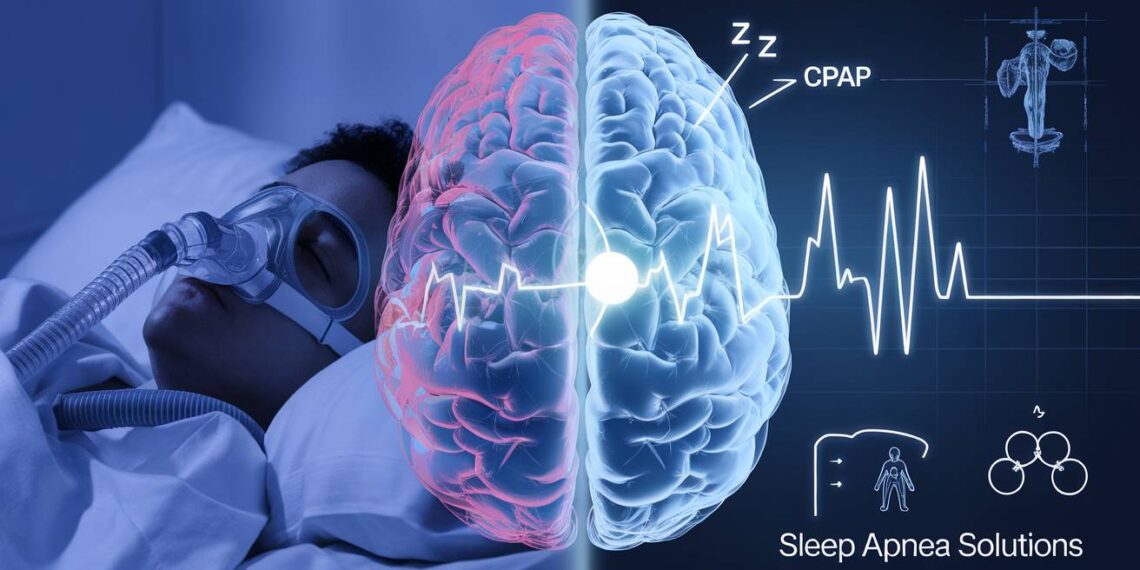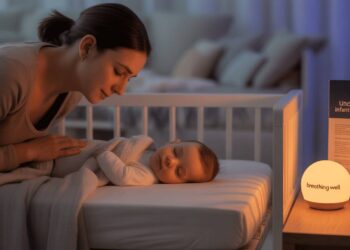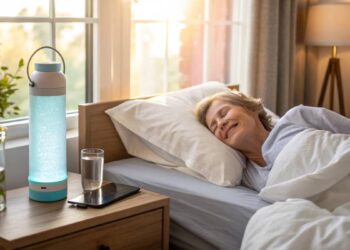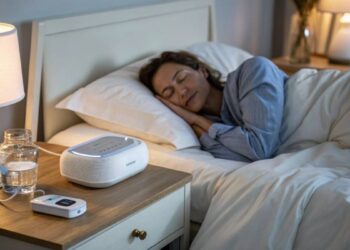Ever wondered why you wake up feeling tired despite a full night’s sleep? Sleep apnea might be the culprit, disrupting your rest with frequent breathing pauses. This common yet often misunderstood disorder comes in two main forms: obstructive sleep apnea (OSA) and central sleep apnea (CSA). Understanding the distinctions between these types is crucial for effective treatment and better sleep. Whether you’re struggling with loud snoring, daytime fatigue, or unexplained headaches, deciphering the puzzle of sleep apnea can lead you to the right solutions. Let’s dive into the intricacies of OSA and CSA to help you reclaim your nights and energize your days.
Key Takeaways
- Two Main Types: Sleep apnea is primarily categorized into obstructive (OSA) and central (CSA) types, each with distinct causes and symptoms.
- Distinct Causes: OSA is caused by physical blockages in the airway, while CSA results from the brain’s failure to signal breathing.
- Unique Symptoms: OSA is often marked by loud snoring and gasping, whereas CSA may lack snoring but includes interrupted breathing and daytime fatigue.
- Effective Treatments: Treatment options vary, with OSA commonly managed by CPAP machines and CSA requiring more specialized approaches.
- Risk Factors: Factors such as obesity, age, and family history increase the risk of developing sleep apnea, highlighting the importance of early detection.
Understanding Sleep Apnea
What is Sleep Apnea?
Sleep apnea pulls the brakes on your night’s rest with repeated breath-stopping shenanigans. Breathing pauses hang around for seconds or minutes and could barge into your slumber dozens of times an hour. That sudden engine roar or throat-sputtering hiccup? Yep, that’s breathing getting back in the driver’s seat. The sleep disorder splits in two main forms: obstructive sleep apnea (OSA) and central sleep apnea (CSA). Knowing the difference makes all the difference for tackling it head-on.
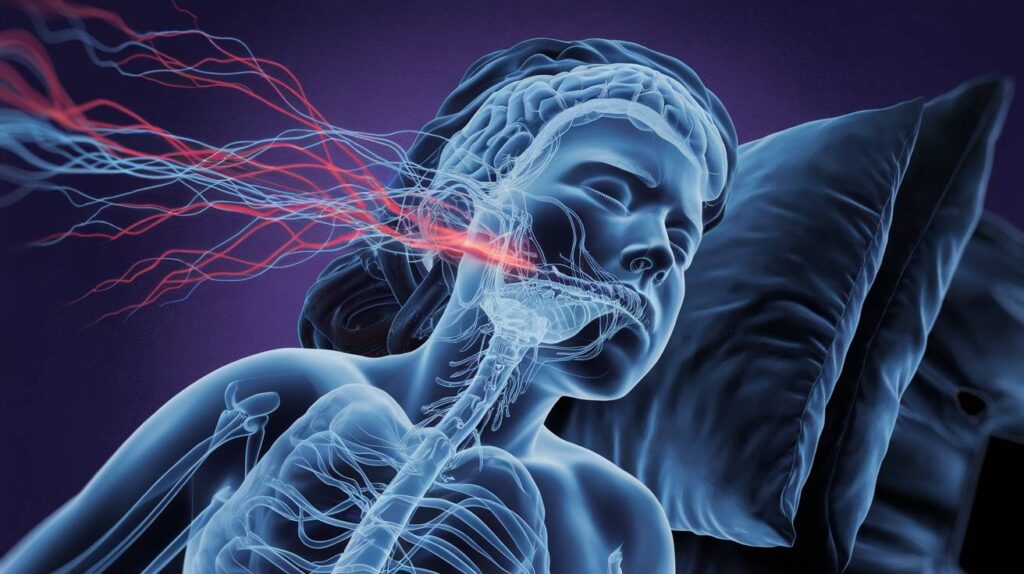
Folks with sleep apnea might feel like they’re sleepwalking through the day, wrestling with grumpiness, or fighting off brain fog. Want more signs? Peek at our piece on sleep apnea symptoms.
The Importance of Differentiating Types
Spotting whether it’s central or obstructive sleep apnea matters big-time because each has its quirks in causes, symptoms, and fixes. OSA’s the popular kid, showing up when the throat takes a holiday, sagging and blocking the air pipe. CSA, a bit of a loner, springs from a communication fail between brain and breathing troops.
| Type of Sleep Apnea | What Goes Wrong | Signs You’ll Spot | Ways to Deal |
|---|---|---|---|
| Obstructive Sleep Apnea (OSA) | Throat muscles crash the airway party | Loud snores, gasping for air | CPAP therapy, shake-up your lifestyle, oral doohickeys |
| Central Sleep Apnea (CSA) | The brain’s “you’ve got one job” moment | No ear-splitting snores, sleep’s not peaceful | Sonder solutions, lifestyle tweaks, look here for cool alternatives |
Cracking the case of which type you’ve got opens the door to snagging the right diagnosis and plotting your playbook. Think you might be tagged by sleep apnea? A home sleep apnea test is a handy first shuffle. Also, giving natural remedies (peek here) a whirl can round out your playbook nicely.
Central Sleep Apnea Explained
Central sleep apnea ain’t just about snoring or blockages; it’s where the brain checks out and forgets to remind your body to breathe while you snooze. Getting the lowdown on the hows and whys of it is key to sorting it out before it messes up your dreamtime.
“Decoding the brain’s role in sleep is the key to unlocking effective treatments for central sleep apnea.”
Causes and Symptoms of Central Sleep Apnea
Things that mess with your brain’s breathing signals are all over the map. You might run into one of these:
| Cause | Description |
|---|---|
| Heart failure | Messed-up heart means brain ain’t doing its job sending breathing messages. |
| Stroke | Can damage parts of the brain that handle breathing. |
| Neuromuscular disorders | Mess with the brain-muscle hookup that runs breathing. |
| High altitude | Thinner air means your body ain’t getting the memo on how to breathe right. |
You’re feeling off? Central sleep apnea might be playing around if you’ve noticed these:
| Symptom | Description |
|---|---|
| Interrupted breathing | Breathing takes a break during sleep. |
| Gasping or choking during sleep | Wake up like a fish out of water? Could be central sleep apnea. |
| Daytime sleepiness | Can’t keep those peepers open all day. |
| Difficulty concentrating | Keeping your mind on track feels like running a marathon. |
Get the full scoop on what’s behind these symptoms with our deep dive on sleep apnea symptoms.
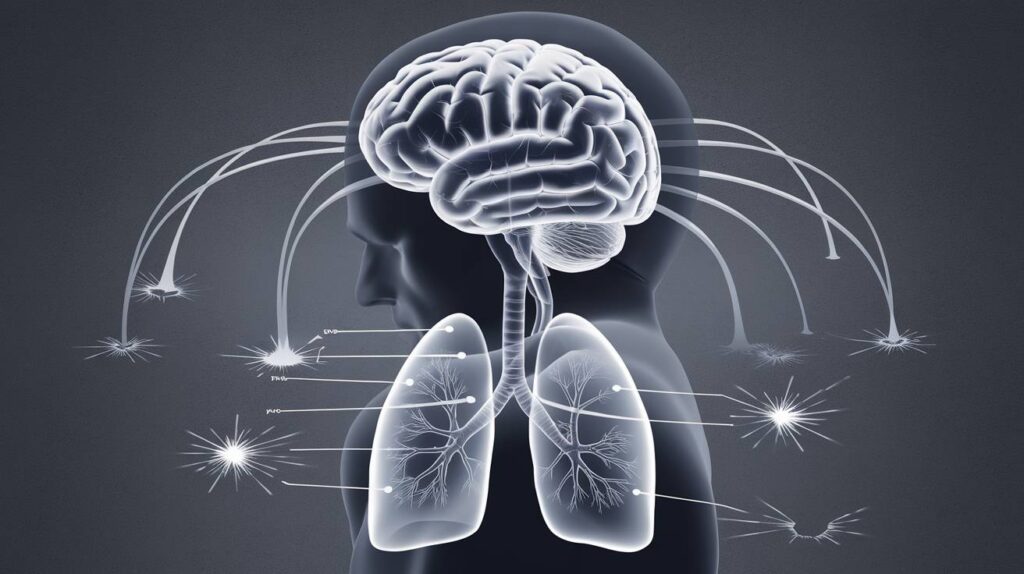
Diagnosis and Treatment Options
Pinning down central sleep apnea needs a bit of detective work. Here’s the 411 on figuring it out:
- Sleep Study: This all-night body-check, fancy-named polysomnography, usually happens at a clinic to scope out your sleep scene and unmask sneaky breathing troubles.
- Home Sleep Test: Prefer staying cozy at home? You can get a gadget to keep tabs on your Z’s overnight without leaving your own bed. Josh in on more at home sleep apnea test.
Once you’ve got the deets on what’s causing the trouble, there’s a mix of ways to tackle it:
| Treatment Option | Description |
|---|---|
| Adaptive servo-ventilation (ASV) | Breathing helper that fine-tunes airflow to match your pattern. |
| Continuous positive airway pressure (CPAP) | The go-to for obstructive sleep apnea, but might give central a run for its money too. |
| Medications | Some meds can kick your breathing into gear or fix other health hiccups. |
| Lifestyle modifications | Trim down the waistline, and it might help those nighttime issues. Get the full picture at does weight loss help sleep apnea. |
CPAP not cutting it? Check out more options in our piece on alternatives to cpap. If you’re thinking about going under the knife, learn about what’s likely to happen with sleep apnea surgery success rate.
Got kiddos you’re worried about? Learn what to watch for at pediatric sleep apnea symptoms, and make sure they catch their Z’s without hiccups. Knowing the ins and outs of central sleep apnea is your ticket to better rest and a happier snooze scene.
Obstructive Sleep Apnea Unveiled
Obstructive Sleep Apnea (OSA) is a bit of a sneaky health issue that creeps up on people, especially those who might be carrying extra pounds, have crossed the 40-year mark, or share a bed with a symphony of snoring. Knowing what triggers it and spotting the signs can make all the difference for catching it early and keeping it in check.
Identifying the physical barriers to breathing during sleep can transform the lives of those battling obstructive sleep apnea.”
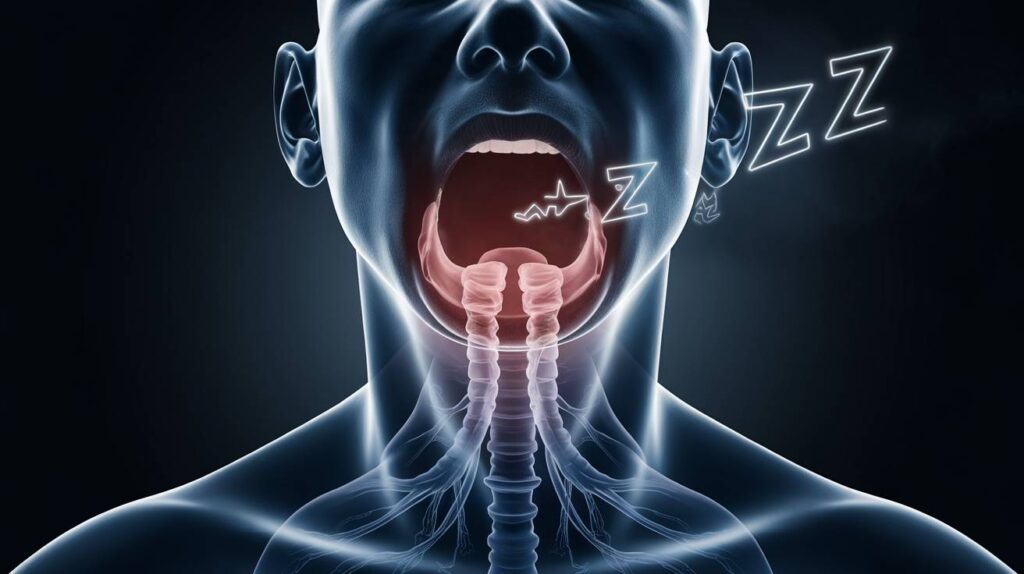
Causes and Symptoms of Obstructive Sleep Apnea
OSA plays the mischief by making the muscles in your throat flop around too much when you sleep, which presses pause on your breathing. Here’s what’s feeding this chaos:
- Extra Pounds: Extra fat around the neck can squash your airway and make sleepway more dramatic.
- Body Quirks: Things like thicker necks, outsize tonsils, or a chin that takes a backseat can shrink your breathing room.
- Getting Older: You’re more at risk as you age, with 40 being a common turning point.
- Being a Dude: Guys, you’re in the lead, but ladies catch up post-menopause.
- Family Ties: If sleep apnea runs in your bloodline, the odds might be stacked against you.
Now for the signs to watch for with OSA:
- Big-time snoring
- Gasping or choking sounds in your sleep
- Feeling wiped out during the day
- Waking up with a head that aches
- Struggling to stay focused
Need more scoop on symptoms? Check out our piece on sleep apnea symptoms.
| What Causes OSA | Signs to Watch For |
|---|---|
| Extra Pounds | Big-time snoring |
| Body Quirks | Gasping or choking |
| Getting Older | Feeling wiped out |
| Being a Dude | Waking up with a headache |
| Family Ties | Struggling to focus |
Diagnosis and Treatment Options
To pin down obstructive sleep apnea, doc’s often suggest sleep studies. Maybe a home sleep apnea test is the first step you take.
When it comes to tackling OSA, it’s not a one-size-fits-all deal; it’s about what suits your needs and health vibes. Here’s the playbook:
- Shake Things Up: Shedding pounds can work wonders. Dive into our tips at does weight loss help sleep apnea.
- Bring in the CPAP: There’s this trusty machine that keeps air flowing into your airways while you doze off.
- Jaw Gadgets: Small noisemakers in your mouth that shift your jaw to clear the pathway.
- Under the Knife: For hardcore cases, surgery to nix that extra baggage or fix those quirks might be in the cards. Curious about surgical stuff? Check our piece on sleep apnea surgery success rate.
- Going Natural: Some folks dabble in natural sleep apnea remedies for a more alternative approach.
Choosing your technique may hinge on how you jive with CPAP. Some people just aren’t a fan of sleeping with a hose. For who else has options, look at our article about alternatives to cpap.
Getting a grip on obstructive sleep apnea can put you in the driver’s seat, steering life towards better health and brighter days.
Key Differences Between Central and Obstructive Sleep Apnea
Knowing the differences between central and obstructive sleep apnea is pretty important for dealing with them effectively. Here, we’ll check out three main areas: how breathing works, what the brain has to do with it, and how you can treat it.
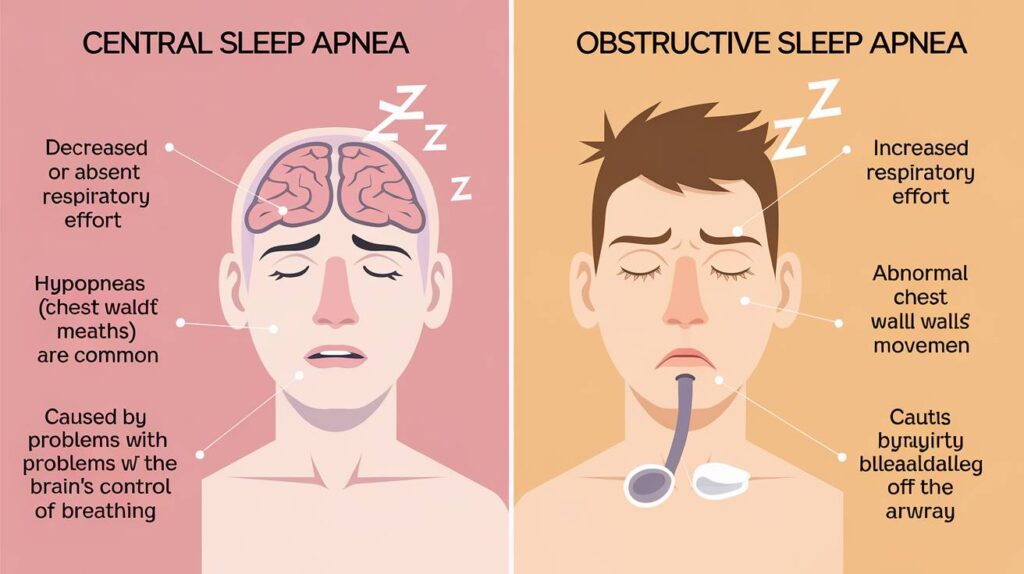
Breathing Patterns
How you breathe can be pretty different depending on which sleep apnea you got.
| Thingamajig | Central Sleep Apnea | Obstructive Sleep Apnea |
|---|---|---|
| Breathing Stops | Brain’s on vacation, not sending signals | Throat’s got a “blocked” sign |
| Snoring | Hardly ever a problem | It’s a band playing all night long |
| Breathing Start-ups | Quick and wakes you up | Slower, often with a bit of a gasp |
Folks with central sleep apnea might wake up feeling more refreshed ’cause they don’t get yanked out of sleep as often. Meanwhile, obstructive sleep apnea keeps folks up with its regular disturbances.
Neurological Involvement
The reasons behind central and obstructive sleep apnea have a brain and funky nerve stuff spin to them.
| Aspect | Central Sleep Apnea | Obstructive Sleep Apnea |
|---|---|---|
| Brain Gig | Brain’s not keeping up with breathing | More about the physical side, like the throat |
| Neurological Disorders | Can tie into stuff like heart problems or strokes | Often associated with extra pounds or how you’ve been built |
Central sleep apnea digs into problems with the nervous system. With obstructive sleep apnea, the issue is usually a throat blockage.
Treatment Approaches
Handling each kind of sleep apnea takes a different playbook.
| Fix-It Options | Central Sleep Apnea | Obstructive Sleep Apnea |
|---|---|---|
| Lifestyle Tweaks | Shed some pounds, cut back on booze | Drop weight and maybe tweak how you sleep |
| CPAP Machine | Sometimes doesn’t cut the mustard; additional methods needed | Works like a charm if you stick with it |
| Pill Pops | Things like breathing stimulants might be used | Not really used, save for certain one-offs |
| Cutting and Snipping | Rarely done | Options like uvulopalatopharyngoplasty (UPPP) are in the toolkit |
With obstructive sleep apnea, that CPAP machine is your buddy, but central sleep apnea needs a bit more custom fixing. Knowing what makes them tick is super helpful for anyone worried about what’s going on at night. For more on symptoms, check out our article on sleep apnea symptoms.
Who Is at Risk?
Knowing who might have sleep apnea can help catch it early and manage it better. Some folks have a higher chance of getting either central or obstructive sleep apnea.
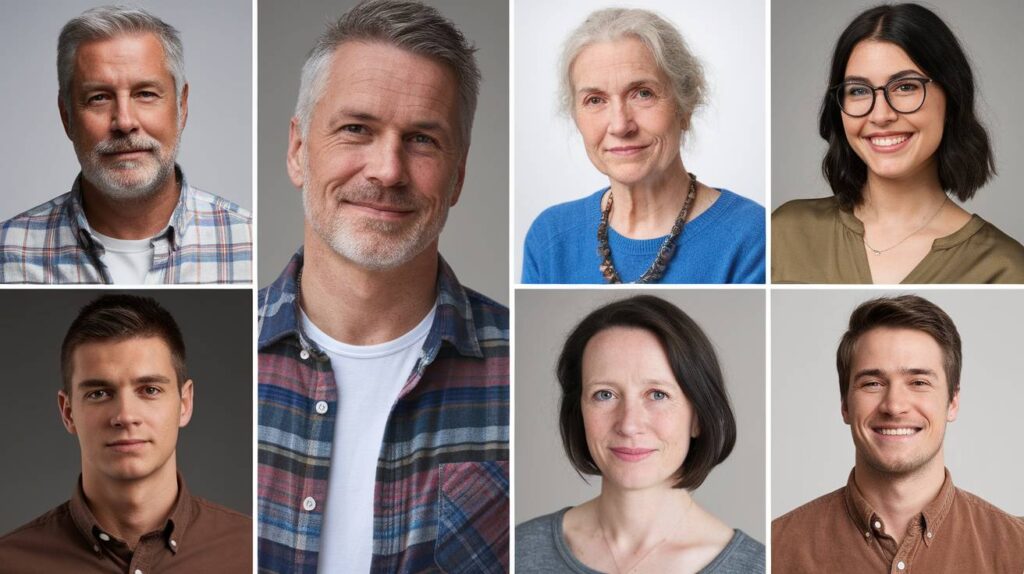
Overweight and Obese Individuals
Carrying extra pounds? That could be a key reason for obstructive sleep apnea. Fatty deposits around the neck can cram airways during those Zzz’s. Folks with a BMI over 30 are in the danger zone.
| BMI Category | Risk Level |
|---|---|
| Underweight | Low |
| Normal Weight | Moderate |
| Overweight | High |
| Obese | Very High |
Check out how shedding weight can be a game-changer in battling sleep apnea in our article does weight loss help sleep apnea.
People Over 40 with Sleep Issues
Gettin’ up there in years? People over 40 might see an uptick in sleep troubles thanks to body shifts and muscle tone changes. If sleep’s a problem child for you, a chat with your doc might be in order. We’ve got you covered with details on sleep apnea symptoms.
Partners of Heavy Snorers
Lying next to a snore symphony? That racket might mean obstructive sleep apnea is in the house. Besides being a sleep thief for partners, it could spell trouble for the one doing the snoring. Encourage your partner to see a doc—it could do you both a ton of good.
Commercial Drivers Needing DOT Certification
Keeping the wheels turning on the nation’s highways? Drivers with sleep apnea can be a danger on the road. Those hitting the highway under the rules of the Department of Transportation (DOT) better get checked for sleep apnea to keep things safe and sound.
Individuals Resistant to CPAP Therapy
Got beef with CPAP masks? You’re not alone. They can be a real headache for some folks trying to handle sleep apnea. But don’t throw in the towel! Chat up your healthcare provider for other ways to tackle obstructive sleep apnea. Dig deeper into the possibilities in our article on alternatives to cpap.
Parents Concerned About Pediatric Sleep Apnea
Worried your little one’s catching less than restful sleep? Kids can get sleep apnea too, showing signs like loud snoring, holding breaths, and tossing and turning. Parents can get more scoop on this in our pediatric sleep apnea symptoms piece.
Post-Menopausal Women
Ladies past menopause might notice hormones playing musical chairs, raising the sleep apnea risk. Packing on a few too many post-menopause pounds can also be a culprit. Knowing the ropes on treatment and management is crucial for this group. Get the lowdown on health impacts in our article on sleep apnea heart problems.
Spotting who’s in the hazard zone for central and obstructive sleep apnea is step numero uno in better handling it. Being clued up means getting ahead with the right help and tackling it head-on.
Final Thoughts
Navigating the complexities of sleep apnea requires a clear understanding of its two primary forms: central and obstructive. Each type presents unique challenges and necessitates tailored approaches for effective management. Central sleep apnea, rooted in the brain’s communication with breathing muscles, demands a focus on neurological health and specialized treatments. Conversely, obstructive sleep apnea, caused by physical blockages in the airway, often benefits from devices like CPAP machines, lifestyle adjustments, and sometimes surgical interventions. Recognizing the specific symptoms and risk factors associated with each type is crucial for early diagnosis and successful treatment. Moreover, adopting healthy lifestyle practices, such as maintaining a healthy weight and avoiding alcohol before bedtime, can significantly reduce the severity of sleep apnea. Support from healthcare professionals, coupled with a proactive approach to treatment, can lead to substantial improvements in sleep quality and overall well-being. By mastering the distinctions between central and obstructive sleep apnea, individuals can take informed steps towards reclaiming their nights and enhancing their daily lives. Prioritize your sleep health today to enjoy restful nights and energized days ahead.
Main Tips
- Differentiate the Types: Understand whether you have central or obstructive sleep apnea to choose the right treatment.
- Seek Professional Help: Consult healthcare providers for accurate diagnosis and personalized treatment plans.
- Maintain a Healthy Weight: Weight loss can significantly reduce the severity of obstructive sleep apnea.
- Use Recommended Devices: Adhere to using CPAP machines or other prescribed devices consistently for best results.
- Adopt Healthy Sleep Habits: Establish a regular sleep schedule and create a comfortable sleep environment to improve sleep quality.
Conclusion
Sleep apnea, in its central and obstructive forms, presents significant challenges to achieving restful and restorative sleep. Understanding the fundamental differences between OSA and CSA is essential for identifying the appropriate treatment and improving overall health. Obstructive sleep apnea, characterized by physical blockages in the airway, often responds well to interventions like CPAP therapy, lifestyle changes, and oral appliances. On the other hand, central sleep apnea, arising from the brain’s failure to regulate breathing, may require more advanced treatments such as adaptive servo-ventilation or medication adjustments. Recognizing the specific symptoms and risk factors associated with each type can lead to timely diagnoses and effective management strategies. Additionally, lifestyle modifications, including weight loss and avoiding alcohol, play a crucial role in mitigating sleep apnea’s impact. By addressing sleep apnea comprehensively, individuals can enhance their sleep quality, reduce daytime fatigue, and improve their overall quality of life. Prioritizing sleep health through informed choices and professional guidance is a vital step toward a healthier, more energized future.
FAQs
What is the difference between central and obstructive sleep apnea?
Central sleep apnea occurs when the brain fails to send proper signals to the muscles that control breathing, whereas obstructive sleep apnea is caused by a physical blockage of the airway.
What are the common symptoms of obstructive sleep apnea?
Common symptoms include loud snoring, gasping or choking during sleep, daytime sleepiness, waking up with a headache, and difficulty concentrating.
How is central sleep apnea diagnosed?
Central sleep apnea is typically diagnosed through a sleep study known as polysomnography, which monitors various body functions during sleep.
What treatment options are available for obstructive sleep apnea?
Treatment options for OSA include CPAP therapy, lifestyle changes such as weight loss, oral appliances, and in severe cases, surgery.
Who is at higher risk for developing sleep apnea?
Individuals who are overweight, over 40, have a family history of sleep apnea, or are commercial drivers requiring DOT certification are at higher risk.

